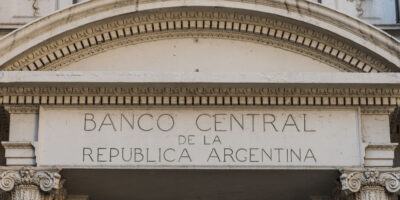Should Argentina Dollarize Now?
With the annual inflation rate currently at 55 percent, some economists have recommended that Argentina abandon the peso in favor of the dollar. John Cochrane, Steve Hanke, and I have all called for dollarization. And, in a new working paper, Jorge C. Avila makes the case.
Avila’s recommendation is noteworthy in large part because he is a professor of economics at the Universidad del CEMA in Buenos Aires. While the topic of dollarization occasionally appears in the news, few Argentinian economists consider it worthy of consideration. That is somewhat surprising, considering that the country has had an average annual inflation rate of 54 percent since 1935 and experienced a rare instance of low inflation from 1994 to 2001 when it maintained a convertibility regime.
Since Avila’s proposal is similar to the proposal Adrian Ravier and I offered a few years ago, I will not take the time to summarize it here. Instead, I will address a few issues I think are worth mentioning.
According to Avila, a dollarized country must figure out how to function without the lender-of-last-resort facility usually offered by a central bank. He offers two alternatives. One is to require that banks keep high levels of liquid reserves, so that a lender of last resort is rarely needed. The other is to promote a high degree of integration with international markets so solvent but illiquid Argentinian banks can access credit when necessary. But there is a third alternative: deposit insurance. Deposit insurance, at least when privately provided, tends to reduce the undesirable bank failures a lender of last resort would otherwise wish to prevent.
Most Argentinian economists opposed to dollarization maintain that it is too rigid a system. But, like Avila, I find it difficult “to understand the accurate meaning of this mantra.” He considers four possibilities:
-
It won’t be possible to reduce real wages through higher inflation rates.
-
It won’t be possible to reduce real government spending through higher inflation rates.
-
It won’t be possible to fine-tune the foreign exchange rate.
-
It won’t be possible to fully react to changes in capital flows.
My impression, however, is that the concern is based on the nirvana fallacy. Argentinian economists tend to confuse the possible with the probable. They imagine a well-functioning central bank that carefully considers and implements policy. But experience suggests something far less desirable will result.
Missing in Avila’s work is consideration of a common (if mistaken) catch-22 argument.
Dollarization on its own, those opposed maintain, will have little effect. Other reforms are needed. But if those other reforms can be adopted, then dollarization is unnecessary. It would be better, they suggest, to make the required reforms and keep the central bank than to adopt the reforms and a rigid dollarization regime. What they miss, of course, is that dollarization makes the necessary reforms more likely by making them costlier to forgo.
Avila’s work offers a blueprint for Argentinian dollarization. All the better that it comes from a fellow Argentinian economist. Let’s hope other Argentinian economists give his proposal serious consideration.










